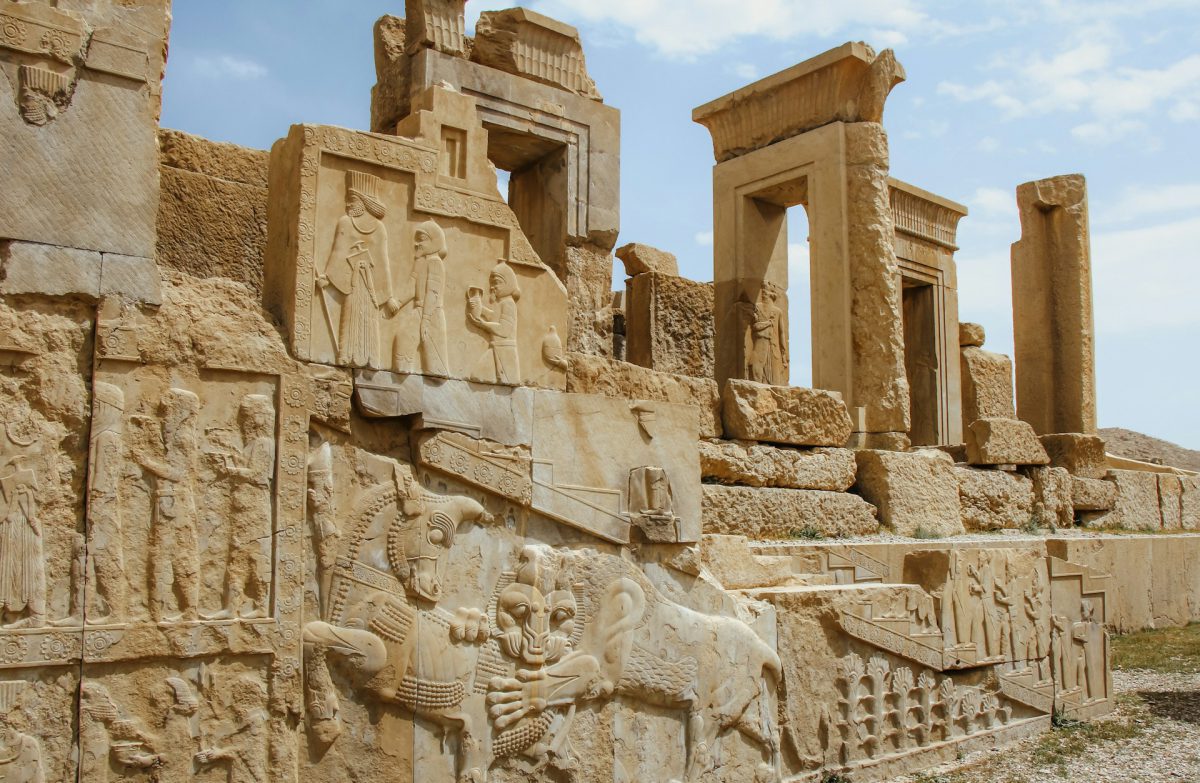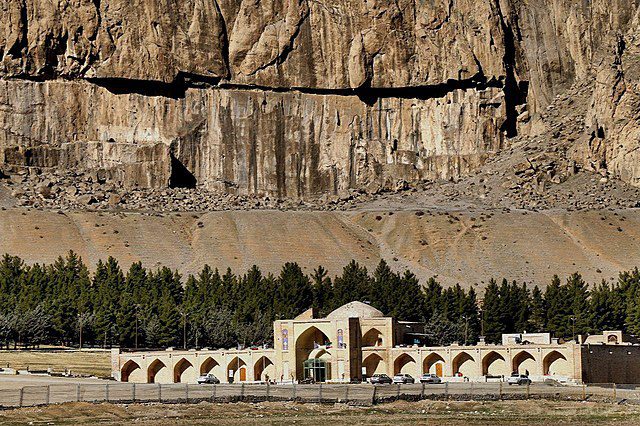Table of Contents
Iran archaeological sites are extensive collection of spots that provide a glimpse into the rich history of the Persian civilization. Here, you’ll find impressive buildings and clever designs that show how skilled Iranian builders were. These sites, recognized by UNESCO, offer a glimpse into Iran’s past, with stunning mosques and old desert towns to discover. With so much to see, you’ll be amazed by the variety and history of Iran’s architecture.
Discover Iran’s fascinating archaeological sites, where you can learn about the country’s past in a fun way. Explore the beautiful buildings and smart designs that Iranians made long ago. These special places, approved by UNESCO, are full of history, from grand mosques to ancient desert towns. With lots to explore, you’ll be excited by all the different types of buildings in Iran’s past.
Iran Ancient History
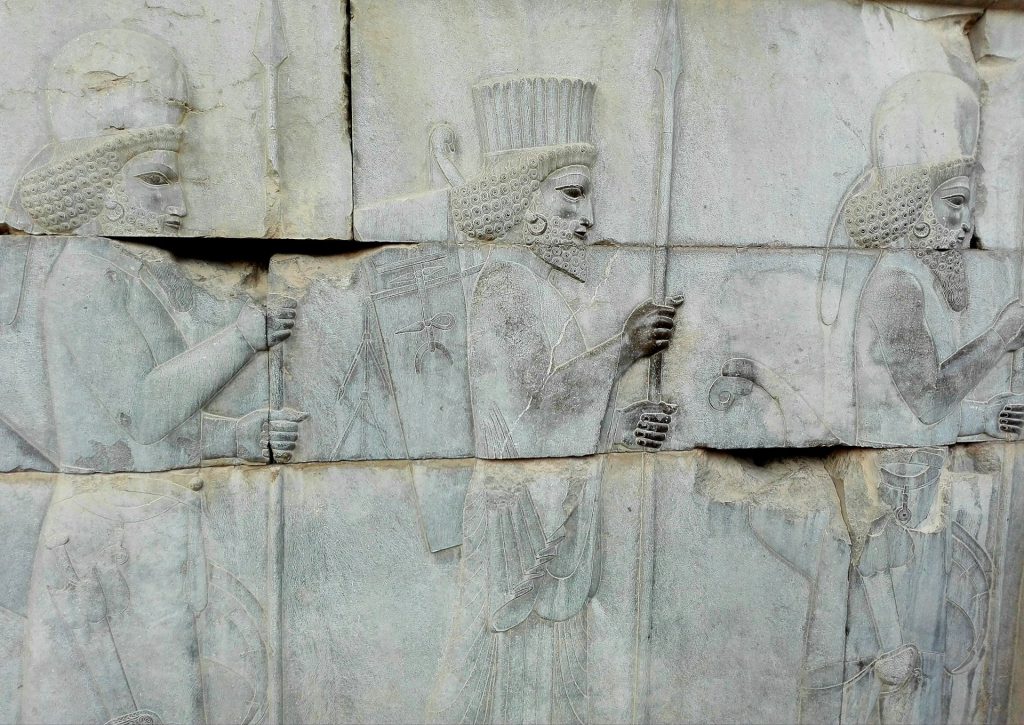
Diving into the past, we uncover Ancient Iran, once known as Persia, standing tall as the big player in Western Asia for over twelve centuries. Three powerful native dynasties—the Achaemenid, the Parthian, and the Sasanian—ruled over a vast and complex empire. In the Getty Museum’s latest exhibit, part of The Classical World in Context program, we explore the fascinating interactions between ancient Iran and the civilizations of Greece and Rome. The artifacts displayed in this exhibition offer vivid glimpses into the intertwined political and cultural identities of these superpowers, revealing how each shaped the other’s self-image.
The historical journey begins with the clash between the Achaemenid Persians and the Greeks around 547 BC. Cyrus the Great’s conquests reached western Asia Minor, bringing Greek cities under Persian rule. This sparked resistance from mainland Greece, leading to significant conflicts in the early fifth century BC. Then came Alexander the Great, whose conquests transformed the map, establishing Greek dominance for over two centuries.
But the Parthians, rising from defeat, reclaimed lost territories, paving the way for a new era. By the turn of the first century BC, the Romans emerged as serious contenders, replacing the Greeks as Persia’s main rivals. The Sasanians took the stage in AD 224, engaging in conflicts with the Romans that shaped the region’s power dynamics until the Arab conquest in AD 651. Thus, the story of Iran ancient history unfolds, leaving an enduring mark on the pages of history.
Who Are the Persians Today
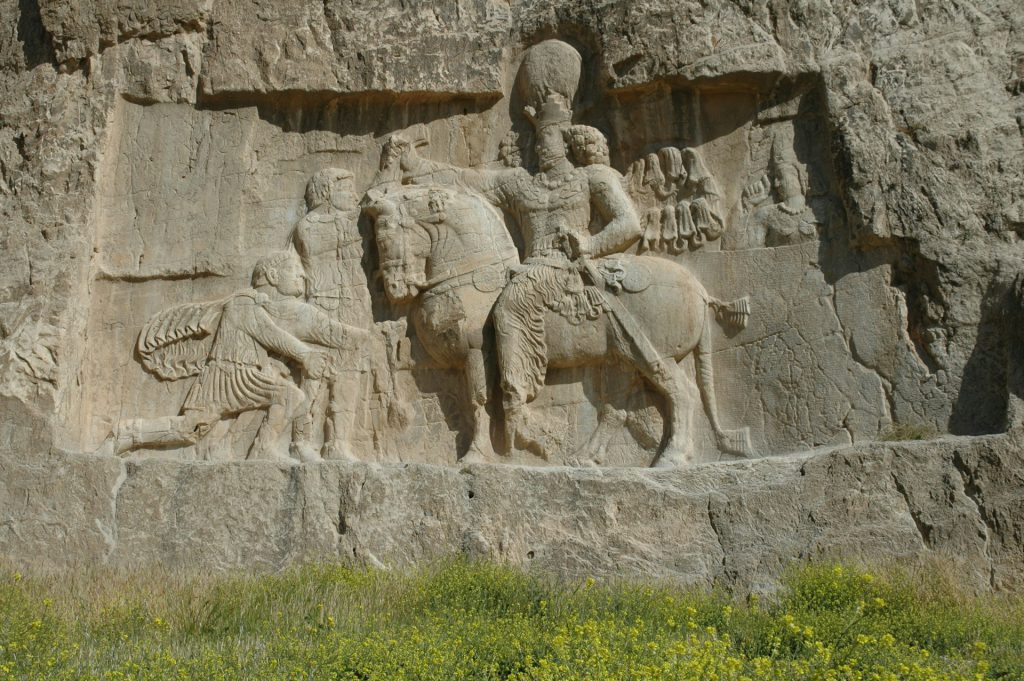
Today, the Persians, who live mostly in Iran, are the main group there. They speak Persian, and most of them follow Islam. In Iran, they have different classes of people, from rich investors to workers with no special skills.
They celebrate special holidays like Noruz, where they come together to enjoy tasty Persian food like lamb and rice. But Persians aren’t only in Iran; you can find them in countries like Tajikistan, Uzbekistan, Afghanistan, and even in some places near the Persian Gulf.
From Iran’s busy cities to communities worldwide, the Persians show their strong connection to their past. They’re not just a group in one place; they spread their culture and traditions everywhere they go, bringing pride and richness to people’s lives.
Persian Ruins
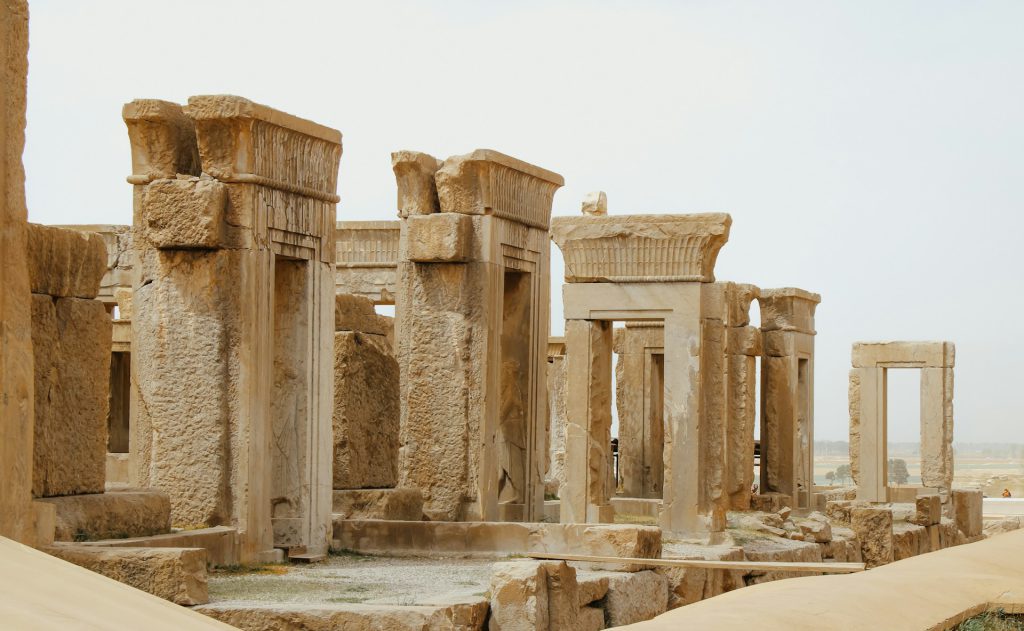
In the heart of the Middle East, Iran holds stories of ancient times waiting to be discovered. Iran ancient ruins call out to adventurers, inviting them to explore the secrets of civilizations that lived thousands of years ago. From the grand palaces of Persepolis to the special temples of Pasargadae, Iran’s old sites share tales of its rich history.
With a history that goes back over 7,000 years, Iran is a mix of many civilizations. Each left behind traces of their time, telling stories of their lives and adventures. Visiting Iran’s old sites gives you a glimpse of ancient cities and amazing buildings made by talented craftsmen. As the day ends and the sun sets over these ruins, it’s a reminder of the strength of Iran’s history, a story of human resilience that still stands strong today.
Iran Ancient Sites
Iran archaeological sites stand as living testaments to the country’s rich history, encapsulating centuries of cultural evolution and human ingenuity. From ornate mosques to enigmatic desert cities, these sites, as UNESCO World Heritage Sites, offer a captivating glimpse into Iran’s storied past. Iran ancient sites unveil the remarkable legacy of Persian architecture, inviting travelers to embark on a journey through the annals of time.
Susa
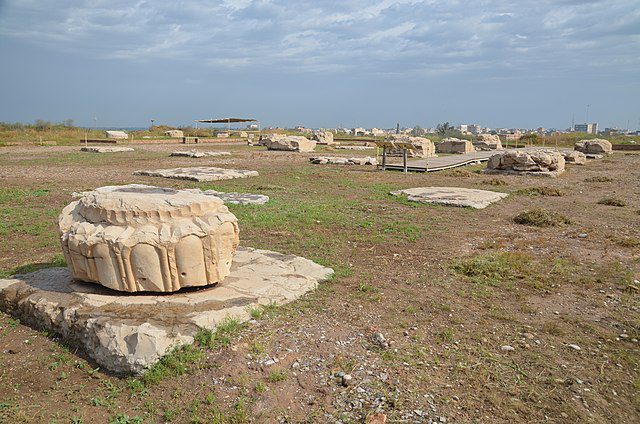
The ancient city of Susa was once the capital of the Elamite and Persian civilizations. Susa is a UNESCO-listed archaeological site that contains the remains of several ancient palaces, temples, and administrative buildings. The city was inhabited for over 5,000 years and was a center of trade, culture, and religion in ancient Persia.
During your visit to Susa, you will get to explore the impressive Apadana Palace, which was built by Darius the Great in the 6th century BC. You will also witness the incredible engineering and architectural skills of the ancient Persians at the nearby Ziggurat of Chogha Zanbil. This massive mud-brick structure was built over 3,000 years ago and is the largest surviving ancient ziggurat in Iran.
Persepolis

Persepolis is one of the most impressive Iran archaeological sites and a symbol of the Persian civilization. The city was founded by Darius the Great in the 6th century BC and was the ceremonial capital of the Achaemenid Empire. Persepolis was built on a massive scale and contains several grand palaces, temples, and administrative buildings that showcase the incredible architecture and design of the ancient Persians.
During your visit to Persepolis, you will get to explore the magnificent Apadana Palace, which was used for ceremonial purposes and could accommodate over 10,000 people. You will also get to witness the impressive bas-reliefs that adorn the walls of the palaces, which depict scenes from the Persian Empire’s history and mythology.
Bisotun
Bisotun is an impressive Persian archaeological site that contains several rock reliefs that date back to the Achaemenid Empire. The most significant of these is the Bisotun Relief, which depicts the king Darius the Great and his army. The relief is over 15 meters tall and provides valuable insights into the Persian Empire’s military campaigns and history.
During your visit to Bisotun, you will get to witness the impressive scale of the Bisotun Relief and learn about the history and mythology depicted in the relief. You will also get to explore the nearby ruins of the ancient city of Bisotun, which was once an important center of trade and commerce in the Persian Empire.
Pasargadae
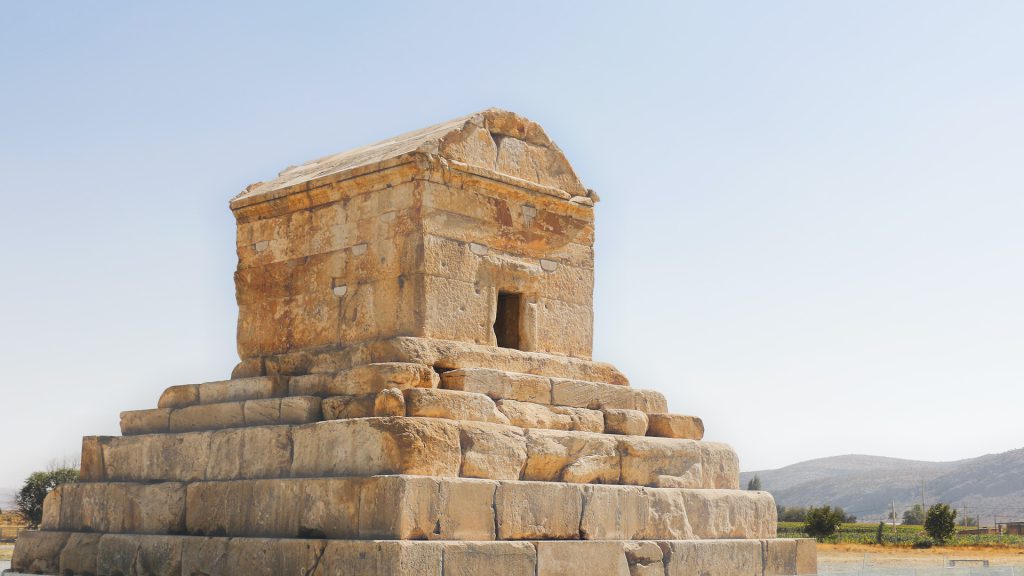
Pasargadae is a well-preserved Persian archaeological site that contains the remains of the first capital of the Persian Empire. The city was founded by Cyrus the Great in the 6th century BC and contains several grand buildings, including the Tomb of Cyrus and the Palace of Cyrus.
During your visit to Pasargadae, you will get to witness the grandeur of the Tomb of Cyrus, which is one of the most significant structures in the Persian Empire’s history. You will also get to explore the nearby Palace of Cyrus, which was the administrative center of the Persian Empire.
Burnt City
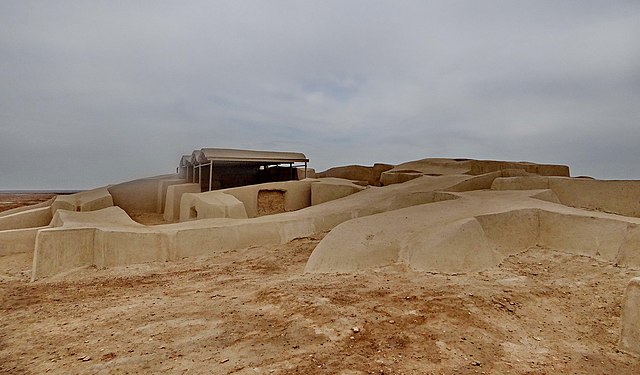
Situated alongside the Helmand River, the Burnt City, also known as Shahr-i Shokhta or Sukhta in Sistan, stands at the highest northwestern edge of the old delta, dating back to the fourth and third millennia BC. As one of the ancient Iran archaeological sites, this city holds the secrets of how simple village life evolved into the bustling vivacity of urban living.
The Burnt City serves as a silent storyteller, whispering tales of an era long past, offering a glimpse into the intricate tapestry of human civilization. Through its ancient ruins and artifacts, it paints a vivid picture of the transition from agrarian settlements to a complex urban society. As we explore its remnants, we unravel the mysteries of how a humble village community transformed into a thriving urban center, shaping the course of history.
Jiroft City
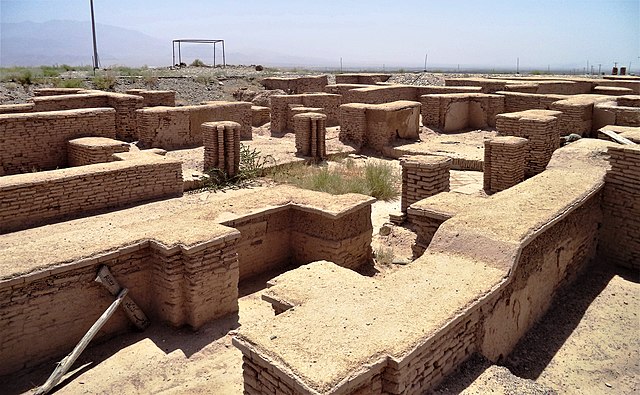
Situated in the southern sector of Kerman province, Jiroft is a fertile township with a rich history that dates back thousands of years and is among Iran archaeological sites. It is approximately 1,375 km from Tehran. To the northeast lies Bam, to its south stands the township of Kahnooj, and in the west, it’s within the limits of Baft. Jiroft is located between two rivers, set in a vast plain against the backdrop of the southern skirts of the Barez Mountain Ranges. The climate varies, with colder temperatures experienced in the higher regions and warmer weather in the low-lying areas.
The ruins of the old city of Jiroft, known as Sabzvaran, lie just 1 km away from its present location. The origins of this ancient city trace back to times immemorial. The concept of a “Jiroft culture” has been proposed, dating back to the early Bronze Age, around the late 3rd millennium BC. This hypothesis is based on a collection of artifacts that were confiscated in Iran, believed to have originated from the Jiroft area in south central Iran, starting in 2001. The proposed type site is Konar Sandal, near Jiroft in the Halil River area.
Why Visit Iran Archaeological Sites
Traveling to Iran to explore its archaeological sites is a unique and unforgettable experience. Here are some reasons why you should consider visiting Persian archaeological sites in Iran:
A Fascinating Look into Iran’s Past
Iran has a rich and diverse history that spans over several millennia. Iran archaeological sites offer a unique and fascinating glimpse into this storied past. Persian civilization has left behind a remarkable legacy that is visible in the ancient ruins, artifacts, and structures scattered throughout Iran.
One of the most significant periods in Iranian history was the Achaemenid Empire, which ruled from 550 to 330 BCE. The empire was founded by Cyrus the Great, who was known for his wise and just rule. Under the Achaemenids, Persia became the largest empire in the world, stretching from the Balkans in Europe to the Indus River in India. The empire’s capital was Persepolis, which is now one of the most impressive archaeological sites in Iran.
Another notable era was the Sassanian Dynasty, which ruled from 224 to 651 CE. The Sassanian period was a time of great cultural and scientific achievements, and many of the country’s most iconic structures, including the Persepolis complex, were built during this time. The Sassanian Empire was known for its intricate metalwork, silk weaving, and elaborate frescoes and reliefs.
In addition to these empires, Iran was also home to many other civilizations, including the Elamites, the Parthians, and the Seljuks. Each of these civilizations has left behind unique cultural and architectural legacies that are visible in the country’s archaeological sites.
From ancient cities and palaces to towering ziggurats and rock reliefs, Iran’s archaeological sites offer a fascinating look into the country’s rich and diverse history. Whether you are interested in exploring the ruins of the Achaemenid city of Pasargadae or marveling at the Zoroastrian fire temple of Yazd, there is no shortage of awe-inspiring sites to discover in Iran.
UNESCO World Heritage Sites in Iran
Iran is home to no less than 24 UNESCO World Heritage Sites, a testament to the country’s rich cultural and historical heritage. These sites range from ancient ruins and architectural masterpieces to natural wonders, and each offers a unique glimpse into Iran’s storied past.
One of the most iconic UNESCO World Heritage Sites in Iran is the Persepolis complex, located in the Fars Province. This ancient city was the capital of the Achaemenid Empire and features a series of monumental buildings and structures, including the Gate of All Nations, the Apadana Palace, and the Throne Hall. Persepolis is considered one of the most impressive archaeological sites in Iran and is a must-visit for anyone interested in ancient history and architecture.
Another UNESCO-listed site that is well worth a visit is Naqsh-e Jahan Square, located in the city of Isfahan. This vast open space is surrounded by impressive buildings, including the Ali Qapu Palace, the Sheikh Lotfollah Mosque, and the Imam Mosque. The square is a testament to the impressive architectural achievements of the Safavid Dynasty, which ruled Iran from 1501 to 1736.
The ancient city of Susa is another UNESCO World Heritage Site in Iran that offers a fascinating glimpse into the country’s past. Located in the Khuzestan Province, Susa was one of the earliest settlements in Iran and served as the capital of the Elamite and Achaemenid Empires. The city features a range of historical structures and artifacts, including the ruins of the Temple of Inanna and a number of impressive ziggurats.
Other UNESCO World Heritage Sites in Iran include the Golestan Palace in Tehran, the Bam and its Cultural Landscape, and the Shushtar Historical Hydraulic System. Each of these sites offers a unique perspective on Iran’s rich cultural and historical heritage, and are well worth a visit for their historical and architectural significance.
Unique architecture of Iran archaeological sites
One of the most remarkable aspects of Iran archaeological sites is the unique architecture that is on display. Persian architecture is renowned for its intricate details, stunning beauty, and remarkable engineering. This style of architecture is characterized by the use of various decorative elements such as tiles, muqarnas, and calligraphy.
The Persepolis complex, which dates back to the Achaemenid Empire, is a prime example of Persian architectural prowess. The complex features massive columns, beautifully decorated walls, and intricate reliefs that tell the story of the Persian Empire. The Naqsh-e Jahan Square in Isfahan, which is a UNESCO World Heritage Site, is another stunning example of Persian architecture. The square is flanked by impressive structures such as the Imam Mosque, Sheikh Lotfollah Mosque, and Ali Qapu Palace. Each of these buildings features unique architectural elements that showcase the Persian style.
Another notable example of Persian architecture is the Ziggurat of Chogha Zanbil, which is located in the Khuzestan province of Iran. This impressive structure is one of the few surviving ziggurats in the world and is recognized as a UNESCO World Heritage Site. The ziggurat was built by King Untash-Napirisha to honor the god Inshushinak and is made up of five tiers that rise to a height of over 25 meters.
The unique architecture of Persian archaeological sites is not limited to ancient structures. Modern structures such as the Tabiat Bridge in Tehran also showcase Persian architectural prowess. The bridge is a unique combination of engineering and architecture, with three levels that accommodate pedestrians, cyclists, and cars. The bridge’s stunning design has made it a popular tourist attraction in Tehran.
Spiritual Significance of Iran Archaeological Sites
In addition to their historical and architectural significance, many of Iran’s archaeological sites hold spiritual and religious importance. One of the most notable examples is the Zoroastrian fire temple of Yazd, which is considered one of the most sacred pilgrimage sites in Zoroastrianism. Zoroastrianism is an ancient religion that was founded in Persia and played a significant role in shaping Persian culture and identity.
Another significant site with spiritual significance is Takht-e Soleyman, a UNESCO World Heritage Site located in northwestern Iran. This site was considered sacred by the ancient Zoroastrians and was home to a fire temple that was considered one of the most important centers of Zoroastrian worship. Today, the ruins of the fire temple can still be seen at the site, along with other ancient structures, including a palace, a temple, and a fortified wall.
In addition to these sites, there are also numerous mosques, mausoleums, and other religious structures scattered throughout Iran’s archaeological sites. These structures not only offer a glimpse into the country’s rich spiritual heritage but also showcase the unique blend of Islamic and pre-Islamic Persian architectural styles. Some notable examples include the Jame Mosque in Isfahan, the Imam Reza Shrine in Mashhad, and the Shah Mosque in Shiraz.
Visiting these spiritual sites can be a deeply moving and meaningful experience, offering travelers a chance to connect with the rich spiritual traditions that have shaped Persian culture and identity for thousands of years.
Off-the-Beaten-Path Exploration in Iran Archaeological Sites
While Iran is home to numerous world-famous archaeological sites, there are also plenty of hidden gems waiting to be discovered by adventurous travelers. These lesser-known sites offer a glimpse into the country’s rich history and culture, as well as an opportunity to explore off-the-beaten-path destinations that few other tourists have had the chance to visit.
One example of such a site is the 7,000-year-old archaeological site of Sialk, located near the city of Kashan in central Iran. This site contains the remains of a prehistoric civilization that is believed to have been one of the first urban settlements in the world. The site is notable for its well-preserved mud-brick buildings and artifacts, including pottery, jewelry, and figurines.
Another hidden gem is the ancient city of Bishapur, founded by the Sassanian king Shapur I in the 3rd century AD. Located in southwestern Iran, the city is known for its impressive rock carvings and ruins, including a grand palace and a fire temple. Bishapur is also home to the impressive Tang-e Chogan rock reliefs, which depict scenes from the Sassanian era.
For those interested in ancient engineering marvels, the ancient water system of Shushtar is a must-see. Located in the Khuzestan province in southwestern Iran, the site features a series of interconnected canals, dams, and watermills that were built in the 3rd century AD. The system was designed to provide irrigation to the surrounding agricultural lands and is considered a masterpiece of ancient engineering.
Exploring these off-the-beaten-path sites is an excellent way to experience the rich history and culture of Iran while avoiding the crowds of tourists that can sometimes overwhelm the more famous sites. With the guidance of an experienced tour operator, travelers can venture off the beaten path and discover the hidden treasures that make Iran such a fascinating and unique destination.
FAQs about Iran Archaeological Sites
Q1: What are some of the must-visit Persian archaeological sites in Iran?
A1: Iran is home to many must-visit archaeological sites, including the Persepolis complex, Naqsh-e Jahan Square, the ancient city of Susa, the Ziggurat of Chogha Zanbil, and many more.
Q2: What is the best time of year to visit Persian archaeological sites in Iran?
A2: The best time to visit Iran’s archaeological sites is during the spring and fall when the weather is mild. Summers can be extremely hot, and winters can be cold and snowy in some parts of the country.
Q3: What kind of tours are available for visiting Persian archaeological sites in Iran?
A3: There are many tours available for visiting Persian archaeological sites in Iran, including guided tours, self-guided tours, and private tours. Some tours focus specifically on archaeological sites, while others may include cultural and historical attractions as well.
Q4: Are the Persian archaeological sites in Iran safe to visit?
A4: Yes, the Persian archaeological sites in Iran are generally safe to visit. Iran is a peaceful country with a low crime rate, and the government takes measures to ensure the safety of tourists.
Q5: Are there any special restrictions or guidelines for visiting Persian archaeological sites in Iran?
A5: Yes, there are some guidelines to follow when visiting archaeological sites in Iran, such as dressing modestly, not taking photographs of military installations or government buildings, and obtaining the necessary permits for certain activities.
Q: How can I learn more about the history and culture of Iran before visiting its archaeological sites?
A: There are many resources available for learning about the history and culture of Iran, including books, documentaries, and online resources. You can also visit museums and cultural centers in your area that feature exhibits on Iran.
Last Words: Discover Iran Archaeological Sites with a Customized Tour
Iran archaeological sites showcase impressive buildings and clever designs, highlighting the skills of Iranian builders. Recognized by UNESCO, Iran ancient sites offer a glimpse into the past, featuring stunning mosques and old desert towns. With so much to see, you’ll be amazed by the variety and historical significance of Iran’s architecture and Persian ruins.
If you are planning to travel to Iran and want to experience the best of Iran archaeological sites, then consider traveling with an archaeological and tailored tour. To Iran Tour is an Iranian tour operator that offers Iran tours and travel packages, including archaeological tours in Iran.
If you want to have a great experience in Iran and see the best of Iran archaeological sites and Persian ruins, consider traveling with ToIranTour.

